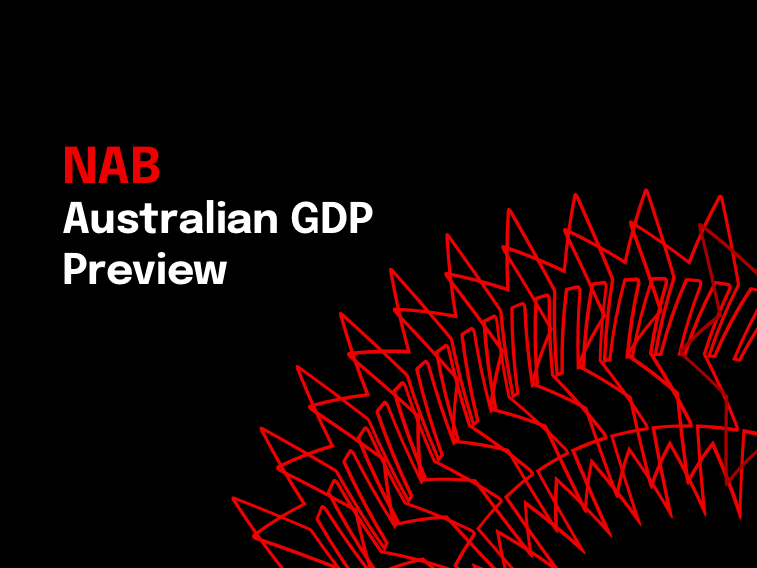A private sector improvement to support growth


Insight
It has been a very eventful night, with US equities ending in a (deep) sea of red with the main indices all off over 2%, bond yields lower and the US dollar weaker across the board led by a rally of more than 1% in the Euro.

It has been a very eventful night, with US equities ending in a (deep) sea of red with the main indices all off over 2%, bond yields lower and the US dollar weaker across the board led by a rally of more than 1% in the Euro. The VIX is up nearly four points to just shy of 19.0 – the highest since early July. My colleague Raiko Shareef across the Tasman succinctly summarises the main news drivers of the overnight moves as follows:
“Another drop in the Shanghai Composite index set the tone for the session, with a 3.4% fall taking the index back down to its 200-day moving average. Late in our session, Kazakhstan abandoned its fixed exchange rate regime, prompting near-25% depreciation against the USD. Pressure is mounting on other fixed exchange rate regimes, with particular attention on Saudi Arabia.
In Turkey, a deteriorating security situation ahead a general election later this year (the second for 2015) has seen the lira weaken to its worst ever level against the USD. North and South Korea exchanged artillery fire across the DMZ, in what is being called the most serious exchange since 2010”.
On the Saudi Riyal, incidentally, 12-month forward points are priced for about a 1% devaluation (implying non-trivial risk of a much bigger devaluation) The last time markets seriously speculated on a Riyal devaluation was back in 2002 (and following a period during which oil prices slumped from above $50 to below $25). In 2007 (after oil had surged through $100 for the first time) markets flirted with Riyal revaluation.
One factor that is not in our view a relevant contributor to overnight ‘risk-off’ moves is Greece PM Alex Tsipras’ decision to call snap election: this is actually likely to produce a stronger ruling coalition than currently exists, and was well flagged during the bailout negotiations when Tsipras sought the support of Opposition parties to gain parliamentary approval for the terms and conditions necessary to secure the bailout. Testament to this, EUR/USD is the best performing currency pair of the last 24 hours.
The EUR move in particular – and broad based USD slippage in general – on a night when incoming US data mostly surprised to the upside (Existing Home sales +2.0% vs. -1.1%, Philly Fed 8.3 up from 5.7 and 6.5 expected) speaks volumes about the role of positioning in what is still the thick of the northern hemisphere summer holiday season.
That US front-end yields aren’t lower still (2yr down only 0.4bp given the quite intense risk-off sentiment and inevitable increased doubts about Fed September ‘lift-off’ also owed much to positioning (there was a big extension of speculative long in 2-year note future last week). Nevertheless, the Fed Funds futures market has further reduced odds on a September Fed move, to 35% from 45% this time last week.
No doubt markets will be eyeing all things China very nervously this morning as well as EM Asia in general. A key point of interest regionally will be the August ‘flash’ Caixin (ex-HSBC) China manufacturing PMI. It was the weakness in the July reading (including the downward revision to the final vs. ‘flash’ estimate to 47.8 from 49.4 in June) that reverberated through global markets, amplifying existing concerns over slowing China growth. When the ‘flash’ reading was reported on 24 July, AUD/USD lost a full cent on the day (from 0.7360 to 0.7260).
We don’t know whether the survey pre or post-dates last Tuesday’s PBoC actions to allow the currency to weaken, though even so it shouldn’t have impacted what is hard activity – not sentiment based – release. Market consensus forecast look for a small rebound in August, to 48.2. If this fails to materialises, it will inevitable bred suspicions the Chinese authorities will soon start countenancing some additional currency depreciation alongside other stimulus measures. If instead we get a bounce, this might provide the pretext for at least a temporary hold up in downward pressure on the AUD and EM currencies in general.
Offshore tonight, the main (developed world) interest will be in the ‘flash’ Eurozone PMIs, where at the overall Eurozone level manufacturing is seen slipping to 52.2 from 52.4 while services holds steady at 54.0. We’ll get the Markit version of US manufacturing PMI tonight and in Canada CPI and retail sales –both highly relevant for the near term fate of the CAD.
On global stock markets, the S&P 500 was -2.10%. Bond markets saw US 10-years -5.43bp to 2.07%. On commodity markets, Brent crude oil -2.08% to $46.18, gold+2.1% to $1,152, iron ore -1.0% to $55.84. AUD is at 0.7344 and the range was 0.7285 to 0.7373.
For full analysis, download report:
For further FX, Interest rate and Commodities information visit nab.com.au/nabfinancialmarkets
© National Australia Bank Limited. ABN 12 004 044 937 AFSL and Australian Credit Licence 230686.